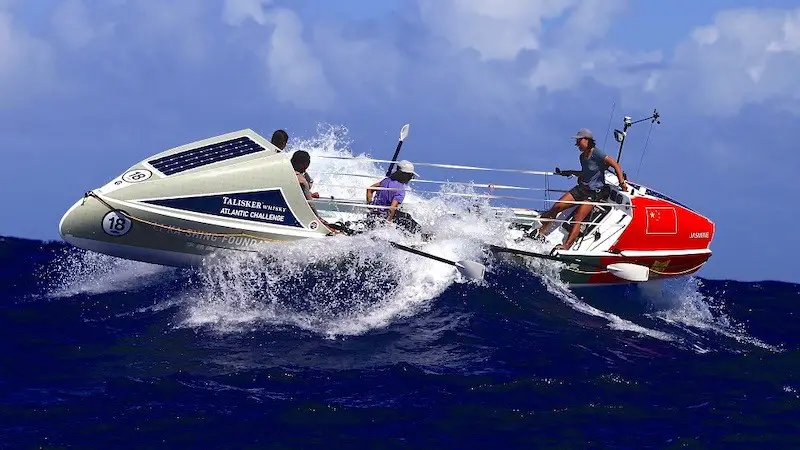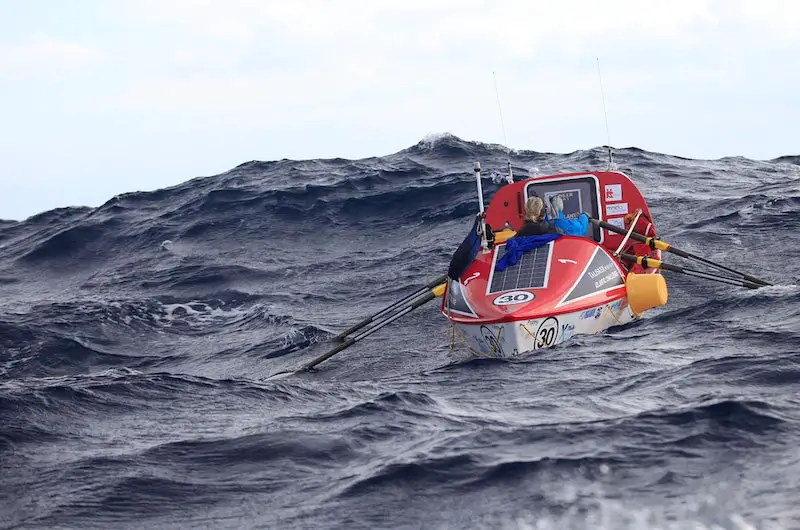Let’s face it, the past 10+ months have been difficult ones for those of us who enjoy taking part in—or following—a big adventure. Thanks to the ongoing COVID-19 pandemic, most of us have been forced to stay close to home. As a result, there haven’t been as many big expeditions to follow, let along pursue ourselves.
But if you’re looking for a massive undertaking to follow at the moment, look no further than the Talisker Whisky Atlantic Challenge, which is taking place right now. The annual event got underway last month and as always it has provided plenty of excitement for the participants and those of us watching from afar.
What is the Talisker Whisky Atlantic Challenge?
For those who aren’t familiar with the Atlantic Challenge, it is one of the most difficult and demanding events that takes place on a yearly basis. Put simply, it is a race across the Atlantic Ocean in row boats that begins in the Canary Islands on the eastern side of the pond and ends in Antigua in the Caribbean.
That journey typically takes 35-40 days for the top rowers to complete, covering more than 3000 miles (4828 km) in the process. This year, 55 people signed up to take part in the race, which offers several categories for them to compete.
Most of the boats involved in the event fall into the two- or four-person category, although there are always a handful of solo rowers too. Naturally, the teams with multiple people will be the fastest out on the water, while the single racers face a long, lonely battle with the ocean.
This year’s field includes 21 total teams from across the globe. Entrants have come from the U.S., the Netherlands, South Africa, the U.K. and Spain. Some are experienced long-distance rowers, while others are undertaking a challenge of this magnitude for the very first time.

A Test of Endurance, Strength, and Mental Fortitude
The Talisker Whisky Atlantic Challenge is an athletic event unlike any other. In order for teams to make stead and swift progress across the Atlantic, they must man the oars at all times. That means rowing 24-hours per day, seven days a week.
Two- and four-person teams usually row in shifts with half the squad pulling the oars at all times. Those shifts usually last for 2-4 hours, with the rowers who aren’t working the oars napping, eating, and rehydrating while they can.
Rowing for 12+ hours per day can certainly take its toll on even the fittest of human beings. It is a physical grind that can be mind numbingly boring for days on end. Rowing across an ocean requires a great deal of stamina of course, but it is often the mental challenges that are the toughest to overcome.
Even the most fit and hardy individuals may question their decision to take part in the Atlantic Challenge when they are three weeks into the event, sleep deprived and calorically dividend, and still hundreds of miles from the finish line with a massive storm bearing down on them.
Other challenges include exposure to the sun and wind, dehydration, and an inability to take in a enough calories. And should some kind of an emergency arise, the boats are in the middle of the Atlantic Ocean and often days away from any kind of assistance.

Modern Rowboats are Technological Wonders
For the 4+ weeks that most of the teams are out on the water, their rowboat serves as their home away from home. Not only is it their mode of transportation, but it serves as shelter from storms, high winds, and big waves too. While these boats may be relatively small and cramped, they are also streamlined, swift, and surprisingly agile too.
These days, boats made for rowing across an ocean have been built from the ground up for just such a task. They are aerodynamic in nature, fairly lightweight, and made to support the crew. Usually the are 20-24 feet (6-7 meters) in length and have small cabins in the forward and aft sections of the hull.
They also have ample onboard storage for gear, emergency supplies, and plenty of dehydrated food packages too. The rowing stations are found in the middle for optimum efficiency.
These modern rowboats are equipped with plenty of technology too. They typically have built-in solar panels, desalination units for making fresh water, and a host of electronic gadgetry. GPS navigation and satellite communications are part of the package too, as are auto-steering capabilities, self-righting hulls, and other high tech devices.
2021 Brings Plenty of Excitement
As usual, this year’s Talisker Whisky Atlantic Challenge has provided plenty of excitement and drama. Early on strong winds and unexpected storms made things tough going, with several boats getting rolled by big waves. Thankfully, the equipment designed to roll them back over has worked flawlessly, preventing permeant capsizes.
A joint American-British team known as Latitude 35 also had a scary encounter with a big fish. Recently, their boat was stuck by a marlin, which punctured the hull with its spike-like nose. The beach took several hours to repair and cost the team precious time, but thankfully the were able to patch the hole and keep rowing.
Current Standings
As of now, the top teams are steaming towards the finish line in Antigua. As of this writing, Team Row4Cancer is in the lead, with On Shoulders of Giants, and Latitude 35 in hot pursuit.
Those boats are expected to begin arriving in port by next weekend, although factors such as wind, ocean currents, weather conditions, and team dynamics can still play a role in the outcome. Of special note, is Team Rudderly Mad, which is currently at the back of the pack.
In this case, “team” is a bit of a misnomer, as the boat only has one person aboard. She is none other than Jasmine Harrison of the U.K., a 21-year old woman who is looking to become the youngest woman to ever row an ocean solo.
It has been a rough go early on for Jasmine, who has not only struggled to make an meaningful distance at times, but has also suffered a severe reaction to seasickness medicine in early days, resulting in her losing her eyesight for 48 hours. Currently, she isn’t expected to reach Antigua until April, putting her far off the pace of the other boats.
You can follow Jasmine—and the entire field of racers—progress on the official Atlantic Challenge tracker. It is sure to provide a bit of an adventure fix when you need it most.
Please check out our buyer’s guides on survival knives and rock climbing boards.
- Gear Review: The Xero Scrambler Mid is an Ultralight Hiking Shoe for Spring - March 1, 2023
- Gear Review: Yeti Roadie 48 Wheeled Cooler - August 18, 2022
- Kristin Harila Continues Pursuit of 8000-Meter Speed Record - August 16, 2022

Hey Kraig,
Ocean rowing is totally not my cup of tea but I do like to say what these ocean rowers get up to. A tiny boat in the ocean expanse for weeks – what a ride!
Separate to the rowing challenge, South African Zirk Botha is currently out there rowing solo from Cape Town to Rio. He is on Day 26 at sea and is making superb progress with the winds on his side. He has a bit over 1,412nm in the bag and is now just SE of St Helena Island. He initially headed northerly up the South African coast and is now turning west.
I read this piece a while back: https://sea-to-summit.net/opinion-ocean-rowing-an-exercise-in-futility/
Interesting.
Lisa
Hi Grant Blakeway,
What an amazing feat!! Unbelievable endurance and ‘fasbyting’!! You’re a proper legend. Wish we were there to welcome you in tomorrow Grant. We certainly will be in spirit.
Well done Boet!!
Love Jean and Guy